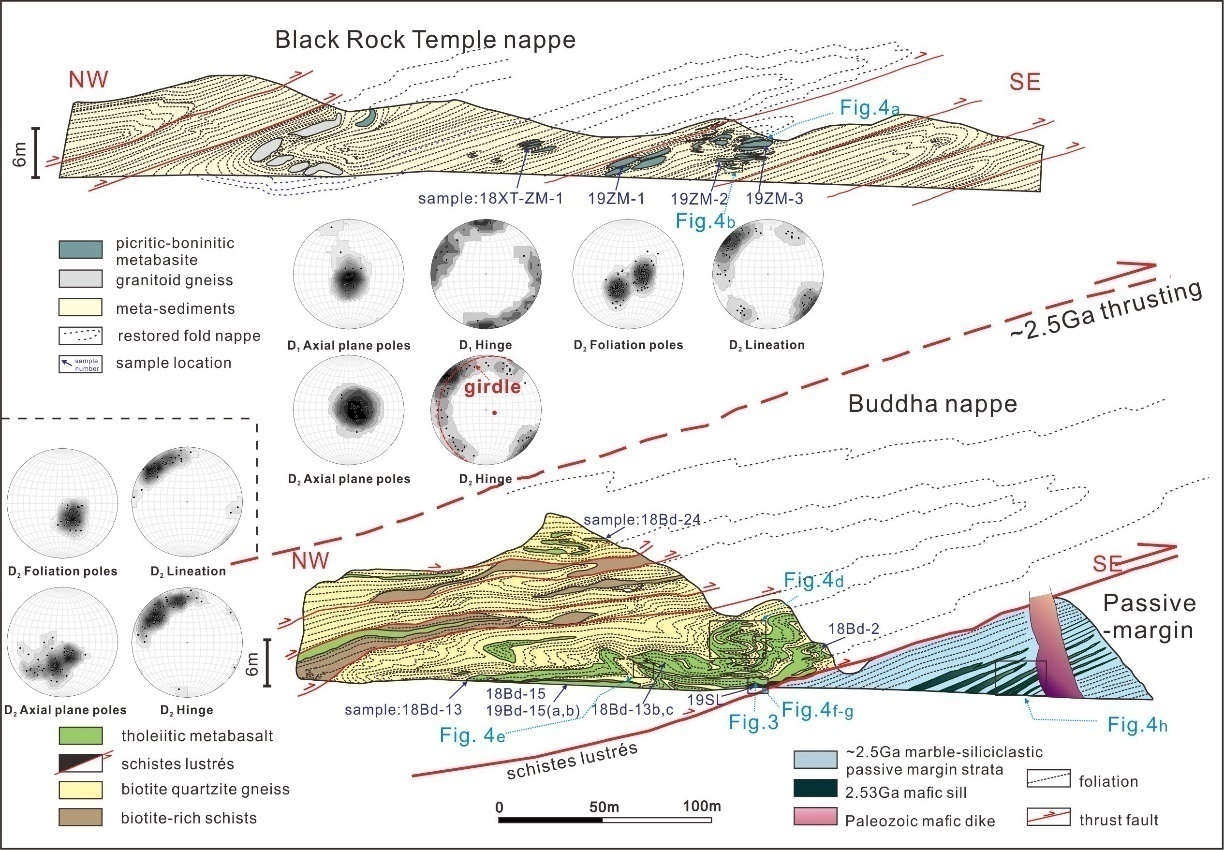The research group led by Professor Tim Kusky, director of the Center for Global Tectonics, published a paper, "Alpine-style nappes thrust over ancient North China continental margin demonstrate large Archean horizontal plate motions ", on Nature communication.
The first author is Zhong Yating, a doctoral student of the school of Geosciences of our university, and the co-corresponding authors are Professor Tim Kusky and Professor Wang Lu of the State Key Lab for Geological Processes and Mineral Resources, Center for Global Tectonics, School of Earth Sciences, and Three Gorges Research Center for Geohazards, China University of Geosciences, Wuhan, China.
Whether modern-style plate tectonics operated on early Earth, as one of the hot frontiers and difficult question in international Solid-Earth Science, is debated due to a paucity of definitive records of large-scale plate convergence, subduction, and collision in the Archean geological record. It is widely believed that ophiolite, tectonic (ophiolitic) mélange, paired metamorphic belt, subduction-initiation sequence and related subhorizontal nappe structures are the consequence and diagnostic marks of horizontal plate tectonics. The research group led by Professor Tim Kusky has identified a series of 2.5-billion-year-old ophiolites, tectonic (ophiolitic) mélange and paired metamorphic belts on the eastern edge of the Central Orogenic Belt of the North China Craton in the past 20 years, so as to determine an a 1600-km-long Neoarchean collisional orogen. On the basis of previous studies, an Alpine-style subhorizontal fold / thrust nappes have recently been discovered and reported. It was formed at least 2.5 billion years ago and demonstrated that during the period from 2.7 billion to 2.5 billion years ago, lateral transport distance of subducted oceanic crust was of 3560 kilometers, which provides direct evidence for the existence of horizontal plate tectonics in the early Earth (Archean).
Archean Alpine-style sub-horizontal fold/thrust nappes in the Precambrian basement of Xingtai city, north China contain a Mariana-type subduction-initiation sequence of mid-ocean ridge basalt blocks in a 1600-kilometer-long mélange belt, overthrusting picritic-boninitic and island-arc tholeiite bearing nappes, in turn emplaced over a passive margin capping an ancient Archean continental fragment. Picrite-boninite and tholeiite units are 2698 ± 30 million years old marking the age of subduction initiation, with nappes emplaced over the passive margin at 2520 million years ago. Here, we show the life cycle of the subduction zone and ocean spanned circa 178 million years; conservative plate velocities of 2 centimeters per year yield a lateral transport distance of subducted oceanic crust of 3560 kilometers, providing direct positive evidence for horizontal plate tectonics in the Archean.

Profile of Alpine-style sub-horizontal fold/thrust nappes (Mapping was performed at a scale of 1:666)
This research was jointly supported by the National Natural Science Foundation of China and the special fund of the Ministry of Science and Technology.